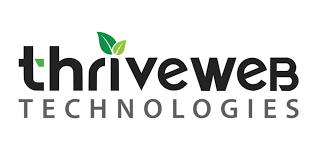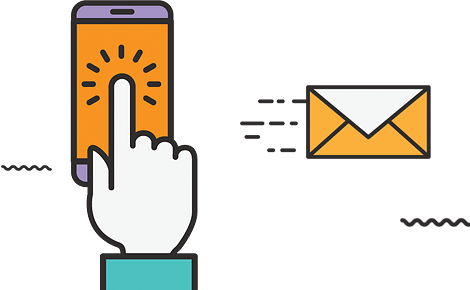Planning to create a standout website that captures attention in 2025? Whether you’re building from scratch or revamping your digital presence, understanding the website development process is critical. A website isn’t just a collection of pretty visuals—it’s a user-centered product designed for function, engagement, and results.
This blog will walk you through six steps in the website development process, from setting goals to launch. By the end, you’ll know exactly how to turn your vision into a fully functioning and impactful website!
Why Understanding the Website Development Process Matters
Think about the brands you love. Chances are their websites are carefully designed to reflect their personality, cater to your needs, and keep you coming back. That level of design doesn’t happen by luck—it requires strategy, effort, and a detailed process.
Following the website development steps ensures clarity, consistency, and a smooth project timeline for everyone involved.
Here Are the Six Steps You Must Know for Website Development in 2025:
- Define Goals and Purpose
- Craft an Engaging UX Design
- Prototype and Refine
- Implement the UI Design
- Develop and Build
- Launch and Continuous Support
Step 1: Define Goals and Purpose
Your website is a tool—it works best when there’s a clear vision guiding it. Start by asking, What do we want this website to achieve?.
Key Questions To Answer:
- Who is my target audience?
- What functionalities will my website need to meet its purpose?
- Are we focused on commerce, lead generation, or brand awareness?
Real-world Example: The e-commerce giant Etsy uses its website to connect buyers and sellers of handmade goods. Every aspect of their site, from navigation to layout, supports this goal of facilitating seamless transactions.
Setting goals early ensures every decision (design, content, features) aligns with your purpose.
Step 2: Craft an Engaging UX Design
UX—short for user experience—is all about creating a seamless and enjoyable interaction for visitors. A site that’s difficult to use loses customers quickly.
What Goes into UX Design?
- Making navigation intuitive
- Ensuring pages load quickly
- Designing actions (like signing up) to be stress-free
Pro Tip: Use heatmapping tools like Crazy Egg or Hotjar to analyze user behavior on prototype layouts to identify potential friction points.
Imagine scrolling through an online clothing store like Zara. You’ll notice categories are neatly divided, filtering options are robust, and checkout is swift—that’s good UX in play.
Step 3: Prototype and Refine
Before jumping straight into development, it’s time to sketch, prototype, and get feedback. Think of this phase as creating a “rough draft” of your website.
Key Tasks in This Step:
- Map out wireframes, focusing on structure and layout
- Create prototypes with tools like Adobe XD or Figma
- Present ideas to stakeholders and collect feedback
The Magic of Revisions: Prototyping allows you to experiment. If something doesn’t look or feel right, this is the stage to go back and tweak without wasting valuable resources later.
A successful prototype brings your vision to life and ensures all parties (designers, developers, and clients) are on the same page.
Step 4: Implement the UI Design
Now that the user experience is locked down, it’s time to focus on the aesthetic details—also known as UI (User Interface) design. UI is where your brand identity, visuals, and creative elements shine.
Key Features of Good UI Design:
- Consistent fonts, colors, and button styles
- Eye-catching visuals that resonate with your audience
- Mobile responsiveness for an optimal experience on any device
Sites like Apple’s are famous for their sleek, minimalistic UI that enhances usability while embodying their innovative brand image.
Pro Tip
Contemporary design trends for 2025 include dark modes, subtle animations, and bold typography. Experiment while staying true to your brand aesthetics.
Step 5: Develop and Build
It’s time to bring everything together. Developers take the blueprints (UX, prototypes, and UI) and transform them into usable code.
Popular Technologies for Web Development in 2025:
- Front-End Frameworks (like React.js or Vue.js): For creating the visual aspects of the site
- Back-End Development (Node.js, Python): For powering the server-side functionality
- CMS Platforms (like Webflow, WordPress): Simplify updates and content management
Don’t Miss This: Your website must be tested extensively at this stage to catch issues like broken links, loading problems, or clunky responsiveness. A buggy site can turn visitors away in seconds!
Step 6: Launch and Continuous Support
Once testing is complete and your team gives the green light, it’s time to launch your site into the world. But the website development process doesn’t end here—it evolves with your users and the digital landscape.
A Successful Launch Includes:
- Promoting the website via newsletters, social media, and search engines
- Monitoring performance metrics like speed, bounce rates, and conversions
- Scheduling regular updates and maintenance
Real-world Example: Reddit periodically refreshes its interface and adds new sections based on evolving user needs. This ongoing improvement is key to staying relevant and accessible.
Providing continuous support and updates keeps your website fresh, functional, and ready to cater to your audience.
Designing Websites Fit for 2025 and Beyond
From defining goals to optimizing user interface design, website development is a balance of artistry and strategy. By following these six focused steps, you’ll avoid frustrations and wasted resources while building a site that engages and serves your audience effectively.
If uncertainty holds you back, consider partnering with experts who specialize in bringing businesses to life online.
Get in touch with us for professional website design support that’s tailored to your vision!




